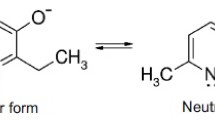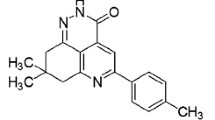Abstract
Elucidation of the mechanisms involved in chemical intoxication is difficult due to the concurrence of multiple cellular events. The major physiological consequences of toxicant-induced injury are organellar dysfunctions, including plasma membrane leakiness, loss of mitochondrial energy homeostasis, limited or pervasive autolysis due to release of lysozomal proteolytic enzymes, nucleic acid damage, and impairment of endoplasmic reticular functions including protein turnover, biotransformation, subcellular packaging and calcium homeostasis (Kaplowitz et al., 1986; Popper & Keppler, 1986). Often organellar associated events are correlated with biochemical events, such as alterations in thiol status, ion homeostasis, ATP levels or lipid peroxidation (Jones et al., 1986; Mitchell et al., 1982; Brattin et al., 1985; Comporti, 1989). In this report we have examined the physicochemical properties of 10 hydrophobic antioxidants that protect against chemical toxicity in isolated rat hepatocytes. Protection is shown to be correlated with both radical quenching and membrane stabilization properties of these compounds.
Access this chapter
Tax calculation will be finalised at checkout
Purchases are for personal use only
Similar content being viewed by others
References
Brattin, W.J., Glende, E.A. Jr., and Recknagel, R.0. (1985). Pathological mechanisms in carbon tetrachloride hepatotoxicity. J. Free Radicals Biol. Med. 1, 27–38.
Comporti, M. (1989). Three models of free radical-induced cell injury. Chem.-Biol. Interactions 72, 1–56.
Jones, T.W., Thor, H., and Orrenius, S. (1986). In vitro studies of mechanisms of cytotoxicity. Fd. Chem. Toxicol. 24, 769–773.
Kaplowitz, N., Aw, T.Y., Simon, F.R., and Stolz, A. (1986). Drug-induced hepatotoxicity. Ann. Int. Med. 104, 826–839.
Mitchell, J.R., Corcoran, G.B., Hughes, H., Lauterburg, B.H., and Smith, C.V. (1982). Acute lethal liver injury caused by chemically reactive metabolites. In Organ-Directed Toxicity: Chemical Indices and Mechanisms ( S.S. Brown and D.S. Davies, Eds.), pp. 117–129. Pergamon Press, NY.
Popper, H., and Keppler, D. (1986). Networks of interacting mechanisms of hepatocellular degeneration and death. Prog. Liv. Dis. 8, 209–235.
Shertzer, H.G., Niemi, M.P., Reitman, F.A., Berger, M.L., Myers, B.L., and Tabor, M.W. (1987a). Protection against carbon tetrachloride hepatotoxicity by pretreatment with indole-3-carbinol. Exptl. Mo/ec. Pathol. 46, 180–189.
Shertzer, H.G., Tabor, M.W., and Berger, M.L. (1987b). Protection from N-nitrosodimethylamine mediated liver damage by indole-3-carbinol. Exptl. Malec. Pathol. 47, 211–218.
Shertzer, H.G., Tabor, M.W., and Berger, M.L. (1988). Intervention in free radical mediated hepatotoxicity and lipid peroxidation by indole-3-carbinol. Biochem. Pharmacol. 37, 333–338.
Shertzer H.G., and Sainsbury, M. (1988). Protection against carbon tetrachloride hepatotoxicity by 5,10-dihydroindeno[1,2-b]indole, a potent inhibitor of lipid peroxidation. Fd. Chem. Toxicol. 26, 517–522.
Author information
Authors and Affiliations
Editor information
Editors and Affiliations
Rights and permissions
Copyright information
© 1991 Plenum Press, New York
About this chapter
Cite this chapter
Shertzer, H.G., Sainsbury, M., Berger, M.L. (1991). Membrane Stabilization as a Fundamental Event in the Mechanism of Chemoprotection Against Chemical Intoxication. In: Witmer, C.M., Snyder, R.R., Jollow, D.J., Kalf, G.F., Kocsis, J.J., Sipes, I.G. (eds) Biological Reactive Intermediates IV. Advances in Experimental Medicine and Biology, vol 283. Springer, Boston, MA. https://doi.org/10.1007/978-1-4684-5877-0_113
Download citation
DOI: https://doi.org/10.1007/978-1-4684-5877-0_113
Publisher Name: Springer, Boston, MA
Print ISBN: 978-1-4684-5879-4
Online ISBN: 978-1-4684-5877-0
eBook Packages: Springer Book Archive




